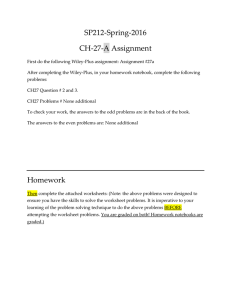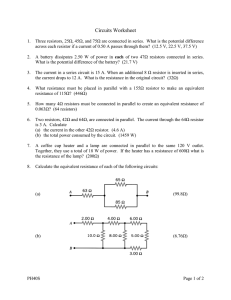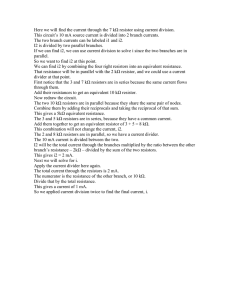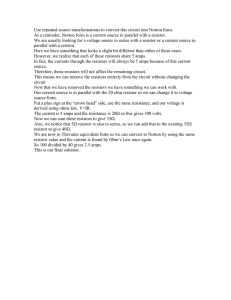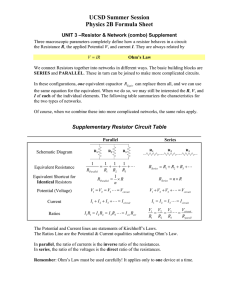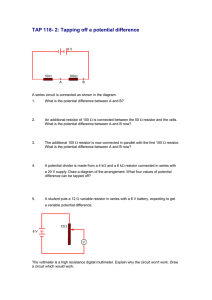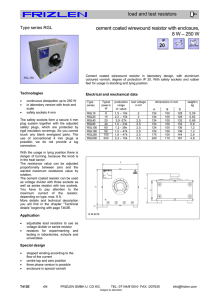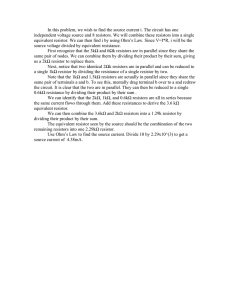3 kΩ 10 mA 10 kΩ 7 kΩ
advertisement
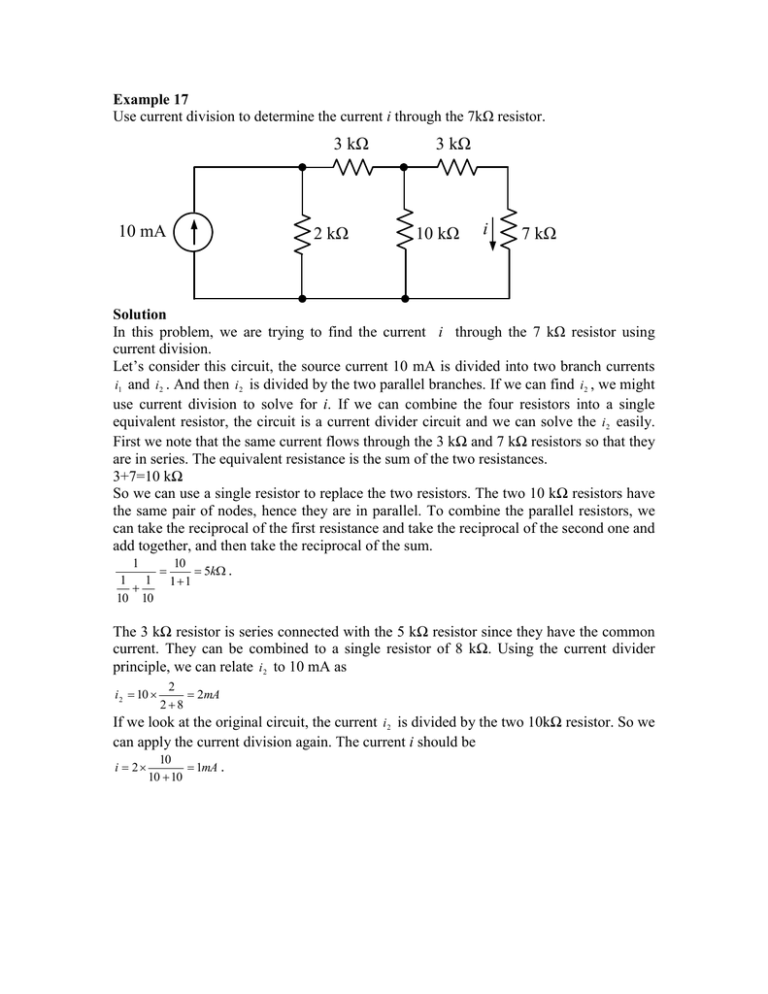
Example 17 Use current division to determine the current i through the 7kΩ resistor. 3 kΩ 10 mA 2 kΩ 3 kΩ 10 kΩ i 7 kΩ Solution In this problem, we are trying to find the current i through the 7 kΩ resistor using current division. Let’s consider this circuit, the source current 10 mA is divided into two branch currents i1 and i 2 . And then i 2 is divided by the two parallel branches. If we can find i 2 , we might use current division to solve for i. If we can combine the four resistors into a single equivalent resistor, the circuit is a current divider circuit and we can solve the i 2 easily. First we note that the same current flows through the 3 kΩ and 7 kΩ resistors so that they are in series. The equivalent resistance is the sum of the two resistances. 3+7=10 kΩ So we can use a single resistor to replace the two resistors. The two 10 kΩ resistors have the same pair of nodes, hence they are in parallel. To combine the parallel resistors, we can take the reciprocal of the first resistance and take the reciprocal of the second one and add together, and then take the reciprocal of the sum. 1 10 5k . 1 1 11 10 10 The 3 kΩ resistor is series connected with the 5 kΩ resistor since they have the common current. They can be combined to a single resistor of 8 kΩ. Using the current divider principle, we can relate i 2 to 10 mA as i 2 10 2 2mA 28 If we look at the original circuit, the current i 2 is divided by the two 10kΩ resistor. So we can apply the current division again. The current i should be i 2 10 1mA . 10 10


